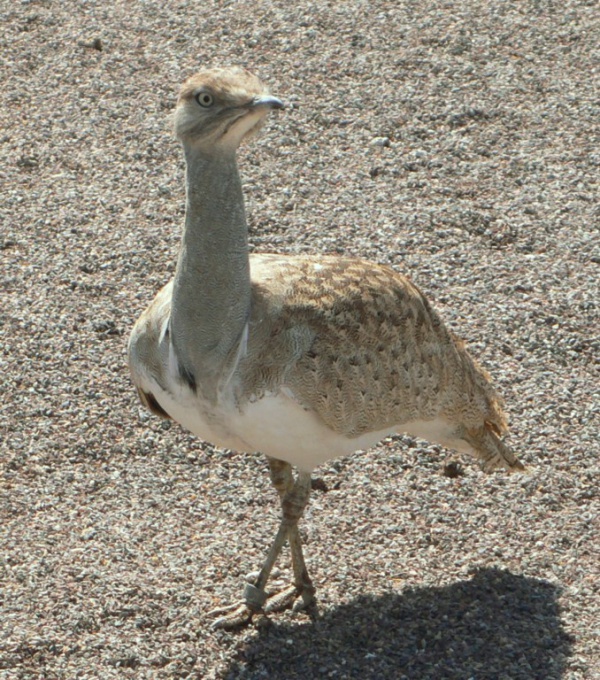Facts About Houbara bustard
The houbara bustard, also known as the African houbara, is a large bird inhabiting North Africa and southwestern Asia, typically thriving in arid environments. Unfortunately, it is listed as Vulnerable on the IUCN Red List due to a declining global population. In Europe, particularly on the Canary Islands, these birds are classified as Near Threatened.
In terms of appearance, the houbara bustard features dull brown plumage with striking black markings on its wings, a greyish neck, and a distinctive black ruff along the side of its neck. Males are generally larger and heavier than females. MacQueen’s bustard, a similar bird from Asia, was long considered the same species but was reclassified as a separate species in 2003.
Initially, the houbara bustard was named Psophia undulata but was later placed in the genus Chlamydotis. The Canary Islands host their own subspecies known scientifically as Chlamydotis undulata fuertaventurae.
Regarding habitat, the houbara bustard primarily inhabits the Sahara region of North Africa, with a smaller population on the Canary Islands. Unlike its migratory cousin, MacQueen's bustard, the houbara bustard is generally sedentary. However, hunting poses a significant threat to their survival.
To address these threats, various conservation efforts are in place. Organizations like the International Fund for Houbara Conservation are vigorously working to prevent these birds from becoming extinct in the wild. Their initiatives focus on breeding and habitat protection. Breeding centers in the UAE, Morocco, and Kazakhstan are dedicated to increasing the wild population through captive breeding and release programs.

 Myanmar (Burma)
Myanmar (Burma)